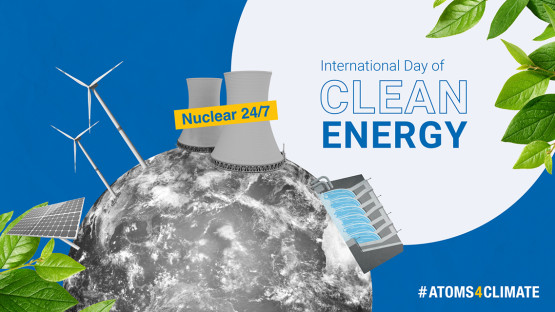Friday is the first ever International Day of Clean Energy, drawing global attention to the debate on the fastest way to phase out coal without damaging our economies.
Only two forms of clean energy can currently provide the scale of power needed to keep electricity flowing 24/7, while the world transitions away from fossil fuels. Both hydropower and nuclear power offer the non-stop baseload power required for sustainable economic growth and improved human welfare.
Nuclear energy already provides around a quarter of the world’s low-carbon electricity. It offers large amount of reliable, dispatchable power providing stability and resilience to the electrical grid and backing up variable renewables such as solar and wind when sunshine or wind are lacking.
According to a 2022 report from the International Energy Agency (IEA): “Nuclear energy can help make the energy sector's journey away from unabated fossil fuels faster and more secure.”
Wind and solar are expected to lead the push to replace fossil fuels. But IEA experts advise that electricity grids also need more stable, resilient and dispatchable power to keep the flow of energy going non-stop. This cannot currently be provided by renewables alone.
Gas has been providing this stability, but it still emits greenhouse gases. Hydropower can also provide grid stability, but only in specific environments.
Like hydro, nuclear power does not release any carbon during its use.
Aside from its low carbon credentials, nuclear power has other features that further support energy supply security and the clean energy transition. For example, one large nuclear power plant can replace multiple coal-fired power plants to provide the same level of energy. Or small modular reactors could be slotted in to replace the old coal-fired plants of similar size, on the same site.
Energy-intensive industries, such as steel production, which use coal for heating and hydrogen production, could also be decarbonized using nuclear power, thanks to the ability of advanced reactors to produce high temperature steam.
Nuclear electricity production costs are less sensitive to changes in fuel prices than electricity from oil and gas. Uranium is available from a range of diverse producer countries, and is incredibly energy dense, meaning comparatively low volumes are required. Enough uranium fuel for several years of electricity production can also be easily stored on the site of nuclear power plants.
When compared with other sources of electricity from cradle to grave, nuclear energy has the lowest carbon footprint, uses fewer materials and takes up less land. For example, solar power needs more than 17 times as much material and 46 times as much land to produce one unit of energy.
Nuclear power is also the second safest source of energy in the world and nuclear waste is carefully managed and regulated. Nuclear energy has some challenges, including high upfront costs. But over their long lifetime, nuclear power plants produce some of the most competitively priced low-carbon energy.
As IAEA Director General Rafael Mariano Grossi wrote in his recent op-ed for the World Economic Forum in Davos: “Nuclear is one of the safest, cleanest, least environmentally burdensome and — ultimately, over the lifetime of a nuclear power plant — one of the cheapest sources of energy available.”
These benefits are being increasingly recognised by environmental activists and world leaders. For example, at COP28 in Dubai, leaders from 22 countries came together to sign a declaration to triple global nuclear energy capacity by 2050 to meet climate goals and energy needs.
“After 28 years in the wilderness, nuclear is finally having its moment at the world’s most important gathering on climate change—and not a moment too soon,” said Zion Lights, a former UK spokesperson for the environmental movement Extinction Rebellion. “As someone who once protested against nuclear energy and changed her mind about it, it is heartening to see just how much attitudes to nuclear energy have changed.”
This year will see the first ever Nuclear Energy Summit, hosted jointly by the IAEA and Belgium, on 21 March 2024.
Co-chaired by IAEA Director General Rafael Mariano Grossi and Belgian Prime Minister Alexander De Croo, it will be the highest-level meeting to date exclusively focused on the topic of nuclear energy.
“More and more countries are either planning to introduce nuclear power in their energy mix or expand already existing nuclear energy programmes. We have seen a clear positive shift in recent years, with a growing realization that nuclear energy is an indispensable part of the solution to some of the most pressing global challenges of our time,” said Director General Grossi.









